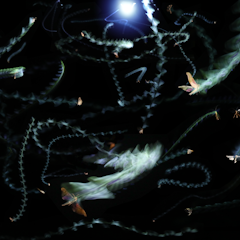
Articles on Navigation
Displaying 1 - 20 of 44 articles

Two ship pilots were on board the large cargo vessel that hit Baltimore’s Francis Scott Key Bridge. A veteran ship captain describes the role these pilots play in close-quarter maneuvering.

‘Jaws,’ published in 1974, terrified the public of sharks, but it also brought shark research into the scientific mainstream.

A new study shows how artificial light at night scrambles insects’ normal flight patterns, pulling them off course into orbit around the light.

Detecting and tracking motion is key to survival. The ability to extract auditory information from a noisy environment changes when your brain isn’t wired to rely on vision.

The eruption was so large, it created its own space weather and satellite technology disruptions – here’s how.

By learning what parts of the brain are crucial for imagination to work, neuroscientists can look back over hundreds of millions of years of evolution to figure out when it first emerged.

Ghanaians aren’t using the new ‘smart’ street address system which was intended to improve service delivery.

The St. Lawrence is one of the most difficult rivers in the world to navigate. It has been the site of collisions, groundings and shipwrecks. Several thousand wrecks lie beneath its surface.

While many people rely on written signage to find their way around, oral language plays a significant role in giving directions in rural areas.

A mathematician explains how language can keep your online accounts safe and pinpoint your location on the planet.

Grid-like cities such as Buenos Aries can have a detrimental effect on navigation ability.

Accurately calculating a ship’s position by hand in 1915 was easy compared to what the New Zealand-born navigator Frank Worsley had to do next.

Migrating birds use both their view of the stars and their internal magnetic compasses to find their way over thousands of miles.

As you’re walking through city streets on your way to work, school or appointments, you probably feel like you’re taking the most efficient route. Thanks to evolution, you’re probably not.

On starlit nights, the Milky Way acts as these beetles’ primary reference. But light pollution gets in the way.

Although some parents may be reluctant to let their children explore their surroundings alone, allowing kids to wander can help build their sense of direction.

The English astronomer and navigator Thomas Harriot died in 1621, leaving behind 8,000 pages of notes containing a trove of unpublished scientific discoveries.

We now have a glimpse into where early Indigenous Australians likely travelled all those tens of thousands of years ago.

Some birds may effectively possess an in-built, global GPS system.

This important discovery demonstrates that cognitive maps are not the exclusive domain of humans and a few other species.
